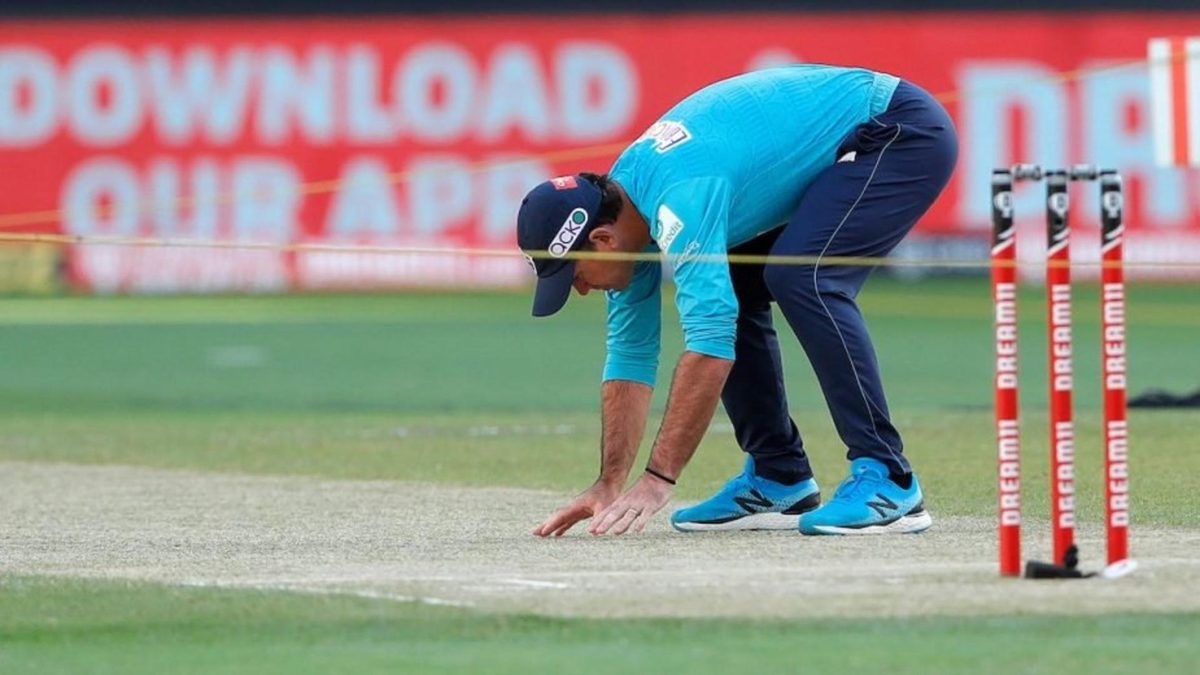
After match referee Javagal Srinath awarded the Ahmedabad pitch used for the two-day third Test of the recently concluded India-England series an ‘Average’ rating, some, Stuart Broad included, have wondered how often such ratings are given in international cricket.
Subscribe to the Wisden Cricket YouTube channel for post-match awards, player interviews, analysis and much more.
The surface attracted conflicting opinions regarding its suitability as it contributed to the shortest completed Test, in terms of balls faced, since World War II. Later in the series, it was suggested that it was the combination of both the surface and the pink ball that led to such a low-scoring affair.
Match referees give each pitch a rating that varies between ‘Very Good’ and ‘Unfit’. The venue does not incur any form of punishment for a ‘Very Good’, ‘Good’, or ‘Average’ rating.
If a venue is given a ‘Below Average’ rating, it is given one demerit point. A pitch with a ‘Poor’ rating is given three points, while an ‘Unfit’ pitch is awarded five. Should a venue accumulate five demerit points in a rolling five-year period, it will be barred from hosting international cricket for 12 months.
So how often are pitch demerit points given?
According to the ICC’s website, no pitch has been given an ‘Unfit’ rating in the last three years and just one has been deemed ‘Poor’ – the Wanderers surface in Johannesburg for a Test between South Africa and India in January 2018. There was just one total above 200 across the Test as India registered a consolation win at the end of a three-game series. Play was brought to a premature halt on the third day due to concerns over the pitch where widening cracks contributed to inconsistent bounce and seam movement, before resuming the next morning.
While not listed on the ICC website, the 2017 MCG Ashes Test pitch and the 2017 Pune India-Australia Test was also given a ‘Poor’ rating.
Since the start of 2019 – according to the ICC website – there have been five instances of pitches being given a ‘Below Average’ rating in men’s international cricket. The ICC website also lists five further instances of games from before that period where pitches received a ‘Below Average’ rating, though it has dates from within the last two years erroneously ascribed to those matches. Seven of the 10 games listed have taken place in the Caribbean, two in Bangladesh and one in India.
The ICC’s Pitch and Outfield Monitoring Process states that a pitch can be rated ‘Below Average’ if it displays: “Either very little carry and/or bounce and/or more than occasional seam movement, or occasional variable (but not excessive or dangerous) bounce and/or occasional variable carry. If a pitch demonstrates these
features, then the pitch cannot be rated in a higher category regardless of the amount of turn the pitch displays at any stage of the match.”
The same document states that, “A Poor pitch is one that does not allow an even contest between bat and ball, either by favouring the batters too much, and not giving the bowlers (seam and spin) from either team sufficient opportunity to take wickets, or by favouring the bowlers too much (seam or spin), and not giving the batters from either team the opportunity to make runs.”
Of particular interest to critics of the Chennai surface used for the second Test and the pitch used for the third Test will be the ICC’s evaluation of the Mirpur surface: “From day one, there was evidence of the ball breaking the pitch surface, which resulted in uneven bounce throughout the match, along with inconsistent turn, which was even excessive at times. This pitch produced a contest that was too heavily skewed in favour of the bowlers, and didn’t give the batsmen a fair chance to display their skills.”
Pakistan’s trip to the West Indies in 2017 was the most affected tour, with four pitches falling below an ‘Average’ rating. Long story short, it’s rare for a venue to receive demerit points but it does happen every now and then.








